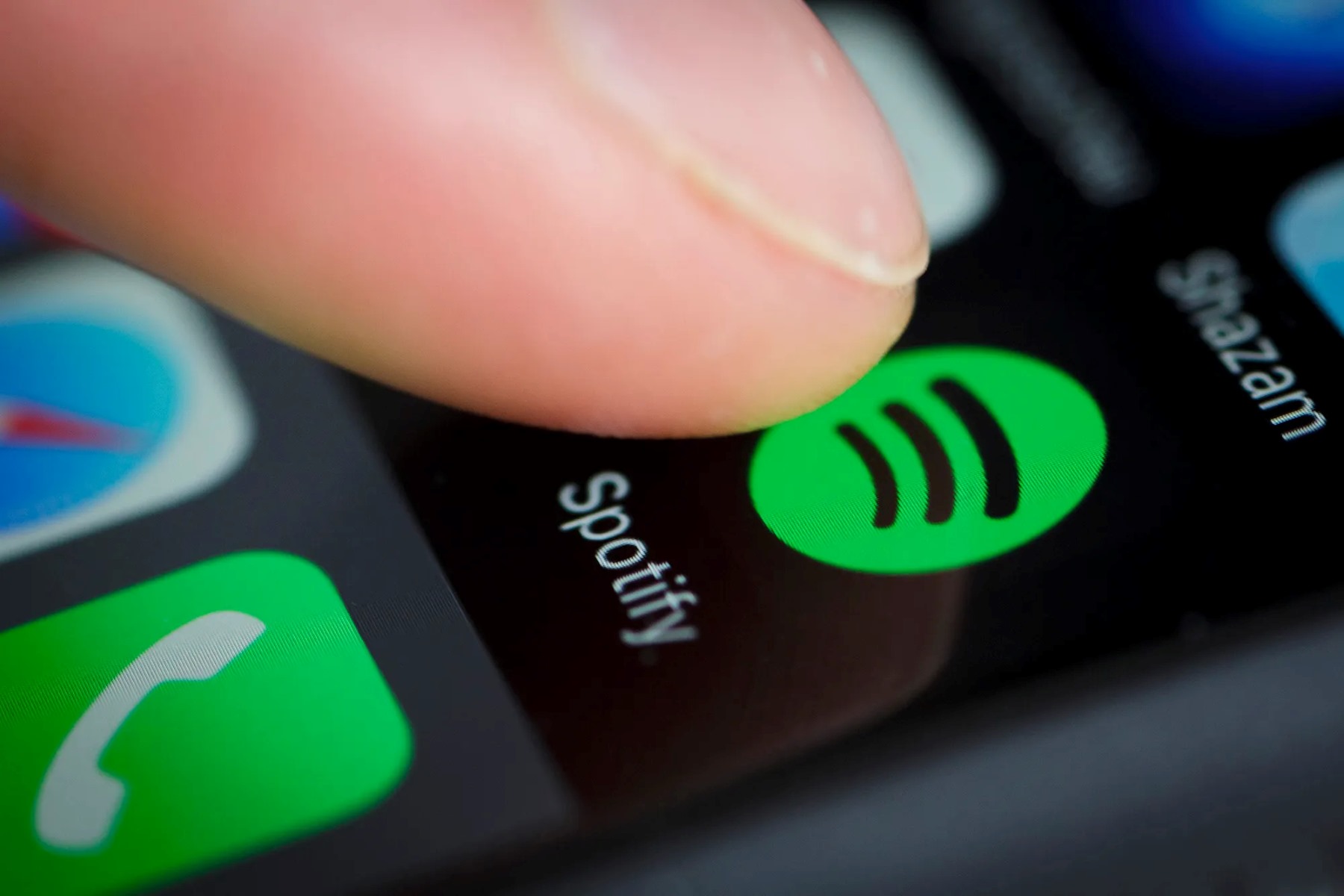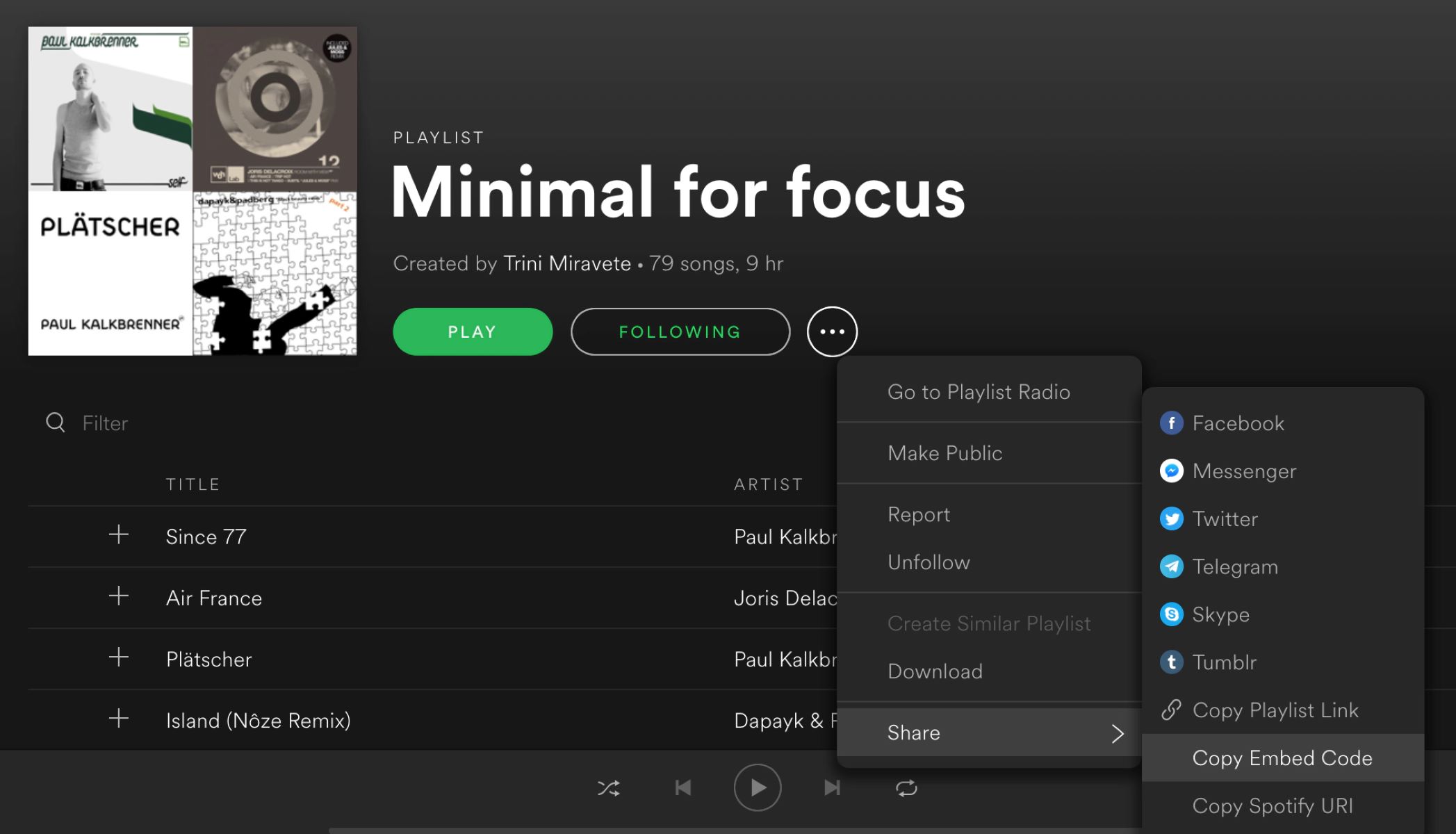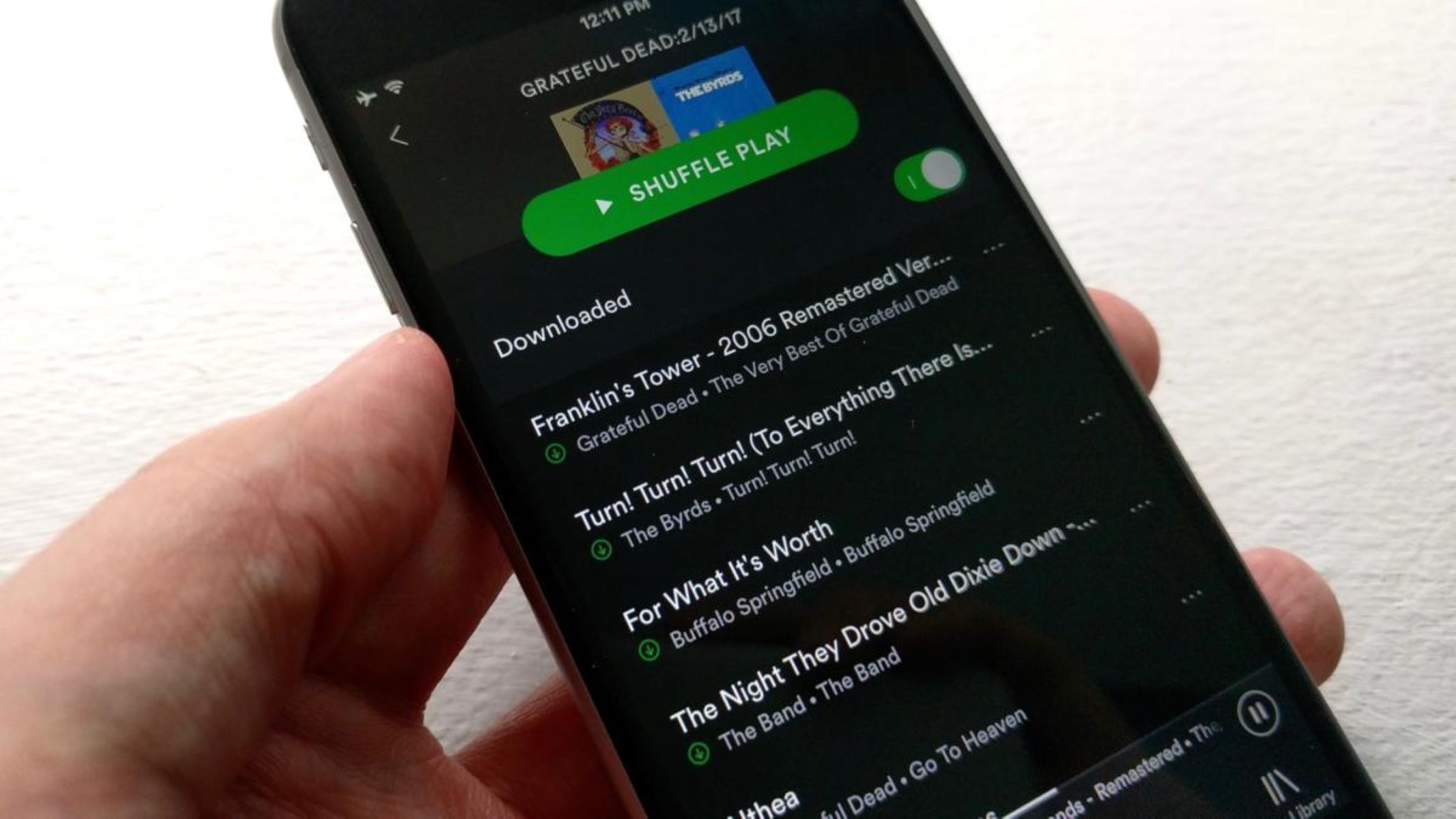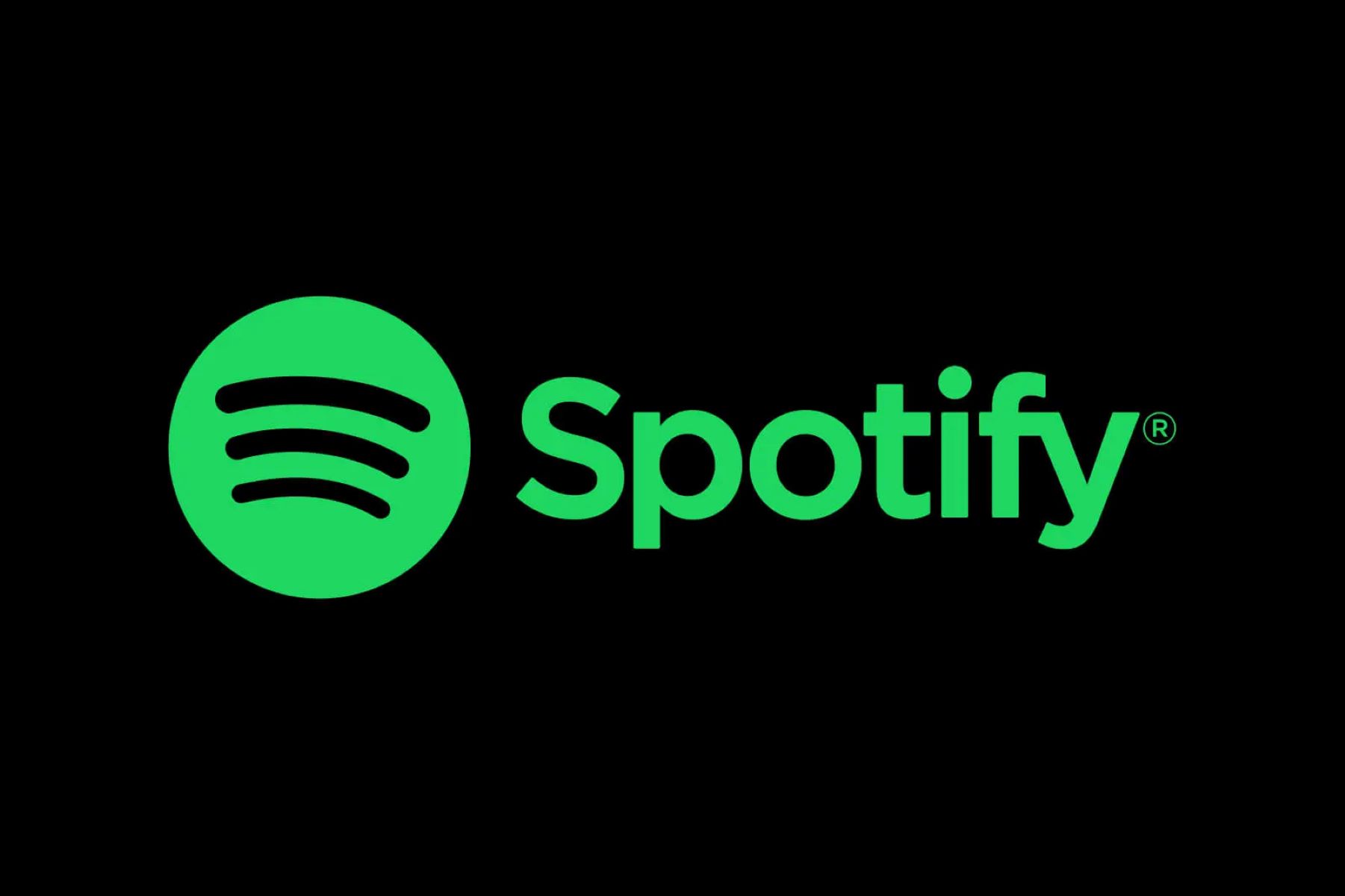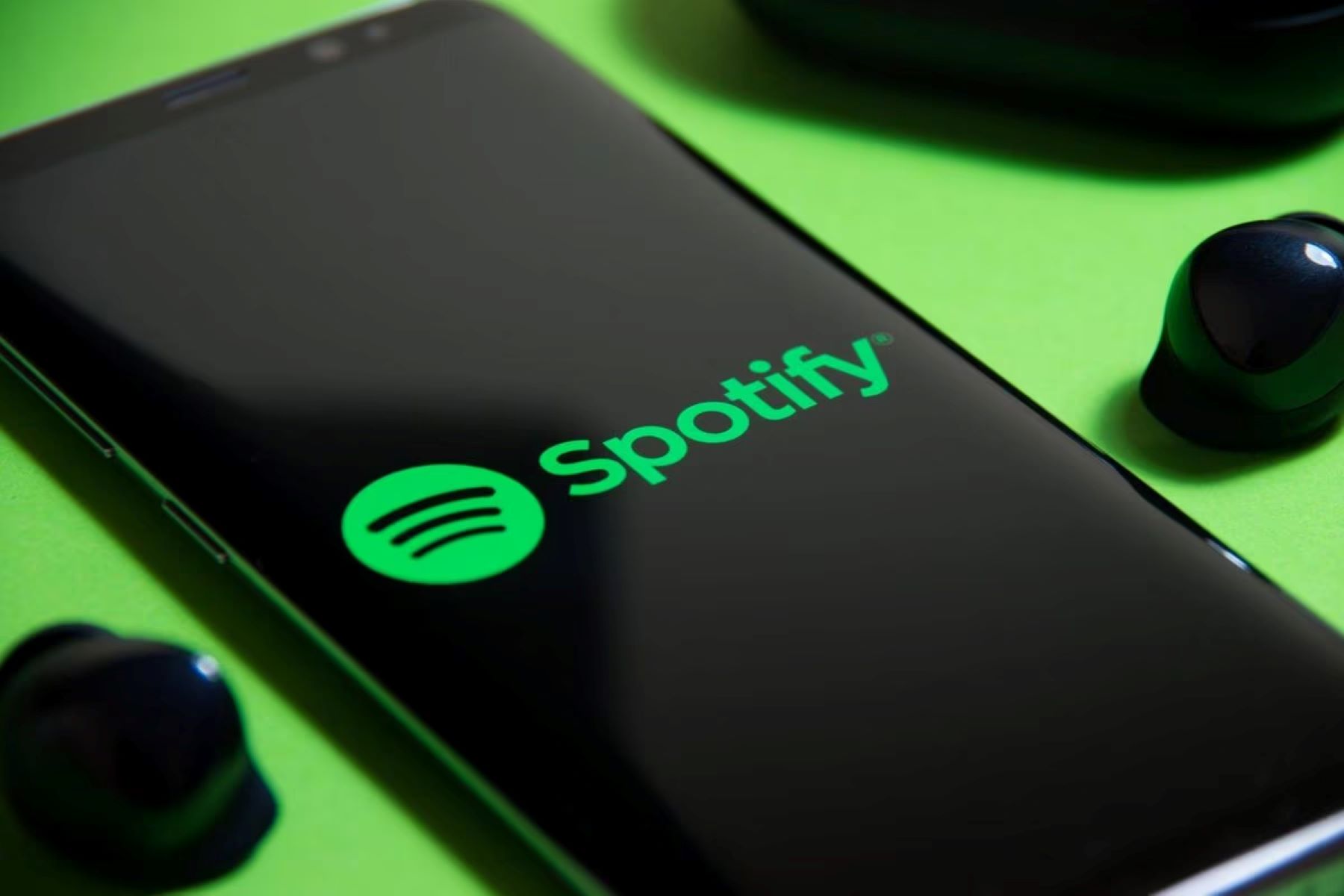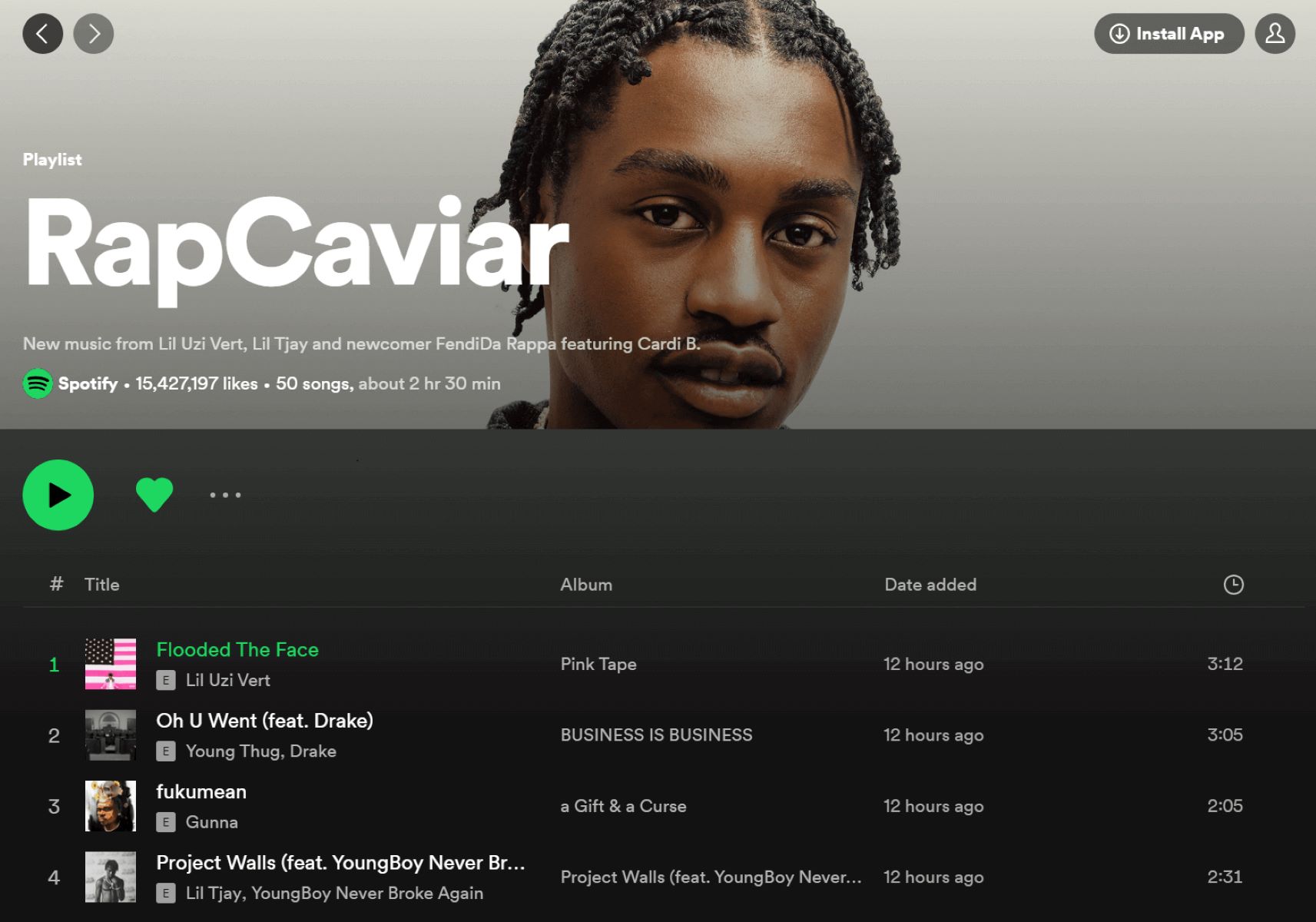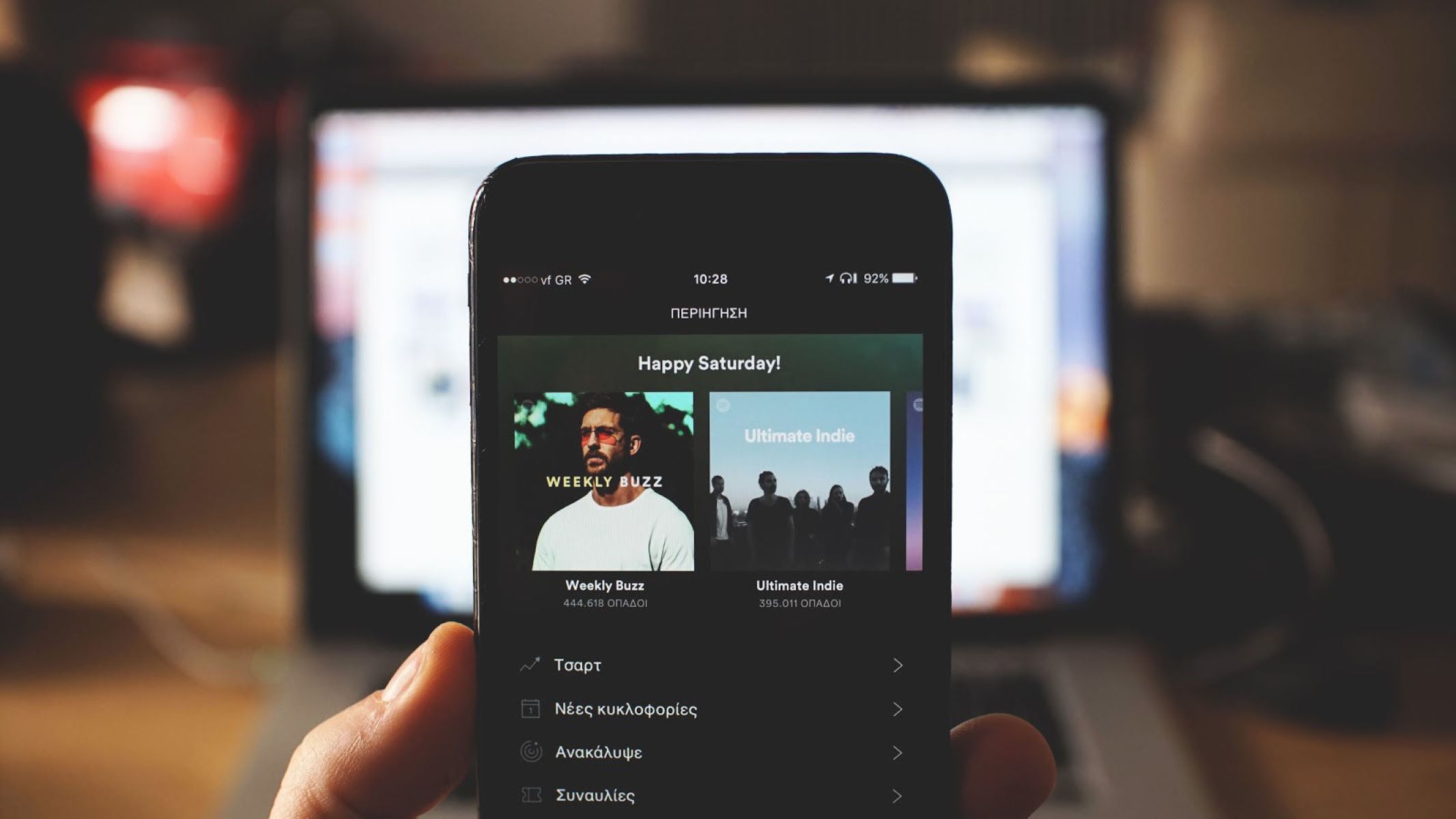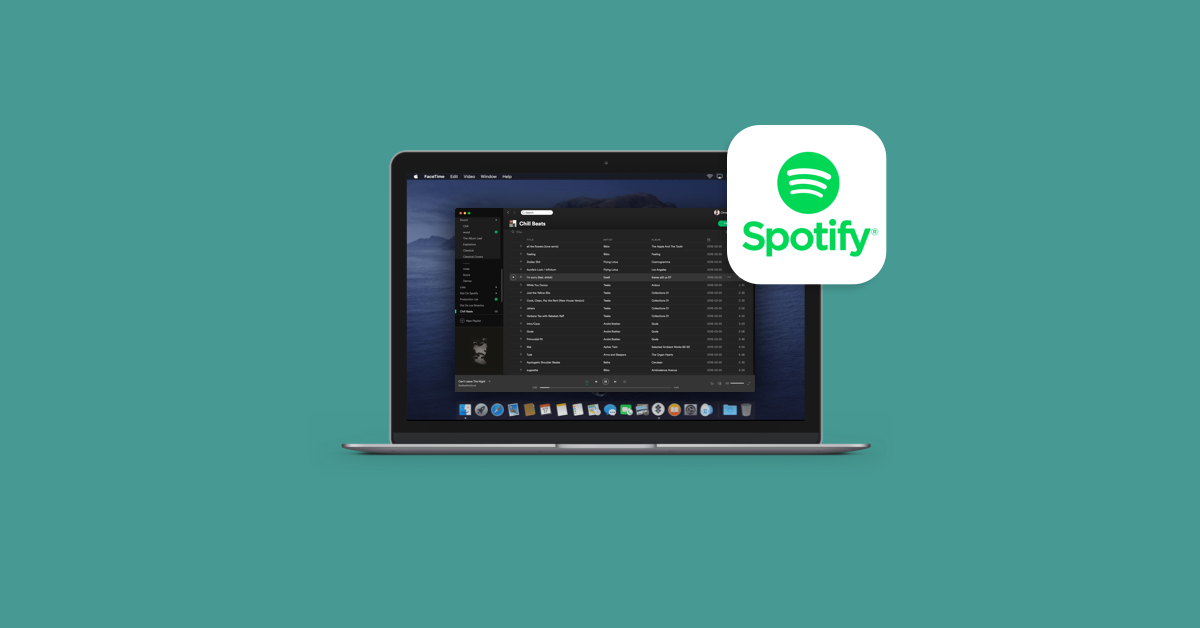Introduction
Since its inception in 2006, Spotify has revolutionized the way we listen to music. With over 320 million active users and 144 million subscribers as of 2020, Spotify has become the leading music streaming platform globally. Whether you’re looking for the latest hits, exploring new genres, or discovering niche artists, Spotify offers a vast library of music at your fingertips.
What sets Spotify apart from other streaming services is its user-friendly interface, personalized recommendations, and extensive catalog of songs. With features like curated playlists, algorithm-based recommendations, and the ability to create and share your own playlists, Spotify offers a unique and tailored music experience for every listener.
The creation of Spotify was a result of the visionary minds of Daniel Ek and Martin Lorentzon. Their aim was to provide a legal and accessible alternative to music piracy by offering a comprehensive platform that benefited both artists and listeners. Through strategic partnerships, global expansions, and innovative features, Spotify has disrupted the music industry, challenging the traditional models of music distribution and consumption.
In this article, we will delve into the fascinating journey of Spotify, from its humble beginnings to its status as the go-to music streaming platform for millions of music lovers worldwide. We will explore the key milestones in Spotify’s development, its business model, industry impact, and the features and services that make it a standout player in the music streaming landscape. Let’s embark on this musical adventure and discover the story behind Spotify’s success.
What is Spotify?
Spotify is a digital music streaming platform that allows users to access and listen to a vast library of music from various genres, artists, and record labels. Launched in 2008, Spotify quickly gained popularity and transformed the way we consume music. With its user-friendly interface and extensive features, Spotify offers a personalized music experience that caters to individual preferences and interests.
At its core, Spotify enables users to stream music online, eliminating the need for physical copies or downloads. Users can create and curate playlists, follow their favorite artists, discover new music through recommendations, and enjoy a seamless listening experience across different devices.
One of Spotify’s standout features is its vast music catalog, which includes millions of tracks from both major record labels and independent artists. From popular chart-toppers to obscure niche bands, Spotify offers a diverse range of music that caters to all tastes and preferences. The platform continuously updates its library, ensuring that users have access to the latest releases and timeless classics.
Another key aspect of Spotify is its personalized recommendation system. Using artificial intelligence and machine learning algorithms, Spotify analyzes user listening habits, preferences, and behavior to generate tailored recommendations. These recommendations are based on factors such as music genre, artist similarity, listening history, and user-generated playlists. This personalized approach enhances the user experience, helping users discover new music that aligns with their preferences.
Spotify also offers a range of subscription options to cater to different user needs. The free version of Spotify is ad-supported and provides limited features, while the premium subscription offers an ad-free experience, offline listening, high-quality audio, and additional features such as unlimited skips and the ability to play any song on demand.
Overall, Spotify has revolutionized the way we access and enjoy music. It offers a convenient, affordable, and legal alternative to traditional music consumption methods, and its innovative features and personalized recommendations have made it a dominant player in the music streaming industry.
The Early Years: Daniel Ek and Martin Lorentzon
The story of Spotify begins with the collaboration of two Swedish entrepreneurs, Daniel Ek and Martin Lorentzon. Both individuals had a shared vision of revolutionizing the music industry and providing a legal and accessible alternative to music piracy.
Daniel Ek, born in 1983 in Stockholm, Sweden, showed remarkable entrepreneurial skills from an early age. He developed his first business venture at the age of 13, creating websites for clients. Ek’s passion for technology and music led him to work for prominent companies such as Tradera (an online auction site) and Stardoll (a virtual fashion community).
Martin Lorentzon, born in 1969 in Stockholm, had a background in technology and finance. He co-founded TradeDoubler, a digital marketing company, and successfully led it to become one of Europe’s largest internet companies. With his expertise in the internet industry, Lorentzon was well-positioned to explore new opportunities in the music sector.
In 2005, Daniel Ek and Martin Lorentzon crossed paths and discovered a shared passion for changing the music industry’s landscape. Recognizing the growth of illegal music downloads, they saw an opportunity to create an online streaming platform that provided legal access to a vast music library.
Earlier attempts at music streaming faced challenges due to inadequate licensing agreements with record labels. However, Ek and Lorentzon were determined to negotiate deals that would benefit both artists and listeners. They aimed to create a platform that offered convenience, affordability, and fair compensation for artists.
The duo spent years building relationships with record labels, convincing them of the potential of streaming platforms, and negotiating licensing agreements. They met with resistance initially, with the music industry still skeptical about embracing digital distribution models. However, persistence paid off, and Ek and Lorentzon successfully secured licensing agreements with major record labels, paving the way for Spotify’s launch.
With their shared determination and complementary skill sets, Ek and Lorentzon founded Spotify in 2006. They assembled a team of talented engineers and developers to bring their vision to life. The platform underwent rigorous testing and improvements before its official launch in October 2008 in Sweden.
The early years of Spotify were marked by rapid growth and enthusiastic adoption from music enthusiasts. The concept of legal music streaming appealed to listeners who were tired of illegal downloads and wanted a convenient and affordable way to access a vast library of music. With its intuitive interface and extensive catalog, Spotify quickly gained traction not only in Sweden but also in other European countries.
The success of Spotify can be attributed to the entrepreneurial spirit, persistence, and vision of Daniel Ek and Martin Lorentzon. Their passion for music and their determination to disrupt the industry laid the foundation for Spotify’s meteoric rise to become one of the world’s leading music streaming platforms.
The Launch of Spotify
After years of negotiations, licensing agreements, and building a robust streaming platform, Spotify was ready to make its official debut in October 2008. The launch of Spotify marked a significant milestone in the evolution of music consumption, offering users a legal and convenient alternative to piracy.
Initially, Spotify was available only in Sweden, as a way to test the market and fine-tune the platform before expanding to a global audience. The Swedish launch allowed Spotify to gain valuable insights and feedback from users, which helped shape its future developments and improvements.
Spotify’s launch garnered widespread attention, catching the interest of both music enthusiasts and industry professionals. The platform boasted an extensive music catalog, featuring music from major record labels and independent artists alike. Users could access their favorite songs, create personalized playlists, and explore new music recommendations.
One of the key features that set Spotify apart was its freemium model. The platform offered users both free and premium subscription options. Free users had access to the complete music catalog but had to tolerate occasional ads between songs. Premium subscribers enjoyed an ad-free experience along with additional perks like offline listening and high-quality audio streaming.
The launch of Spotify in Sweden was met with great enthusiasm, attracting a large and dedicated user base. Within a year of its launch, Spotify reached one million users in Sweden alone, demonstrating the demand for a legal and easily accessible music streaming service.
Emboldened by its success in Sweden, Spotify expanded its reach to other European countries, including the United Kingdom, France, Spain, and Germany. This expansion solidified Spotify’s position as a dominant player in the global music streaming industry.
As Spotify continued to grow internationally, it also forged partnerships with major record labels and independent artists. These partnerships allowed Spotify to add more content to its already extensive catalog and ensured that artists were fairly compensated for their work through royalty payments.
The launch of Spotify not only provided music lovers with a legal and convenient way to access their favorite songs, but it also had a profound impact on the music industry. Spotify’s success paved the way for other streaming platforms to emerge, changing the dynamics of music distribution, sales, and artist exposure.
In the following years, Spotify further expanded its reach to more countries and continued to innovate its platform with new features and services. It became a household name, synonymous with music streaming, and a go-to destination for both music enthusiasts and casual listeners.
The launch of Spotify marked a watershed moment in the music industry, paving the way for the digital streaming revolution that continues to shape the way we consume music today. With its user-friendly interface, vast music library, and innovative features, Spotify disrupted the traditional models of music distribution and set the stage for a new era of music listening.
Spotify’s Growth and Expansion
Since its launch in 2008, Spotify has experienced phenomenal growth and expansion, cementing its position as the leading music streaming platform globally. The platform’s innovative features, personalized recommendations, and extensive music library have captivated millions of users, driving its remarkable success.
After its initial launch in Sweden, Spotify quickly expanded its reach to other European countries, capitalizing on the growing demand for legal streaming services. The platform’s expansion was fueled by strategic partnerships with record labels and music rights holders, allowing Spotify to increase its music catalog and offer a wider range of songs to its users.
The year 2011 was a major turning point for Spotify, as it made its highly anticipated entry into the United States. This expansion was a significant milestone in Spotify’s quest for global dominance, as the US market represented a massive opportunity for growth. The US launch garnered significant attention and excitement, attracting a surge of users who were eager to access Spotify’s extensive music library and innovative features.
As Spotify’s user base continued to grow, so did its revenue. The platform introduced its premium subscription model as a key monetization strategy. Premium subscribers enjoyed an ad-free experience, higher audio quality, and additional features, while generating a steady stream of revenue for the company. Additionally, Spotify generated revenue through advertising for its free users, partnering with brands to deliver targeted ads to its listeners.
The success of Spotify didn’t stop at individual users. The platform recognized the potential for partnerships with businesses and expanded its reach to institutional customers. This included collaborations with companies in the hospitality, retail, and corporate sectors, providing tailored music solutions for ambiance, customer engagement, and employee productivity.
Spotify’s growth wasn’t limited to geographic expansion and revenue generation. The platform continuously invested in technological advancements and introduced innovative features to enhance the user experience. This included personalized playlists such as Discover Weekly and Release Radar, which used algorithms and user data to curate music recommendations based on individual preferences.
Another significant milestone in Spotify’s growth came in 2018 with its successful debut on the New York Stock Exchange. Going public solidified Spotify’s position as a major player in the music industry, attracting further investor confidence and financial resources to fuel its expansion plans.
As Spotify continued to scale, it ventured into podcasting, recognizing the rising popularity of this medium. The company acquired podcasting production houses and signed exclusive deals with popular podcasters, signaling its intent to become a leading platform for podcast streaming as well.
Today, Spotify operates in over 92 countries, serving a vast user base of millions of listeners. Its expansion and growth have challenged traditional music consumption models and transformed the music industry. With an ever-expanding music catalog, innovative features, and a commitment to supporting artists, Spotify remains at the forefront of the music streaming revolution.
Spotify’s Business Model
Spotify has achieved tremendous success not only in terms of user adoption but also as a business entity. Central to its success is its unique and multi-faceted business model that has disrupted the traditional music industry and created a sustainable revenue stream for the platform.
At the core of Spotify’s business model is its freemium offering, which provides users with both free and premium subscription options. This approach allows Spotify to cater to a wide range of users, from those seeking an ad-supported free experience to those willing to pay for additional features and benefits.
The free version of Spotify, supported by ads, serves as an entry point for users to explore the platform and experience its features. It allows Spotify to grow its user base, capture valuable data on user preferences, and expose users to targeted advertisements, which generate revenue for the platform.
On the other hand, Spotify’s premium subscription model offers enhanced features, including ad-free listening, offline access, and higher audio quality. Premium subscribers pay a monthly fee for these additional benefits, generating a significant portion of Spotify’s revenue. The premium offering serves as a sustainable revenue stream and has helped Spotify achieve financial stability and growth.
Furthermore, Spotify established itself as a platform that supports artists and creators through fair compensation. Royalties and licensing agreements with record labels and music rights holders ensure that artists receive a fair share of revenue based on their streams and popularity. This approach has helped Spotify build strong relationships with artists, secure partnerships, and contribute positively to the music community.
In addition to music streaming, Spotify has diversified its business model by venturing into podcasting. Recognizing the growing popularity of podcasts, Spotify has made strategic investments in podcast production companies, acquired popular podcasts, and signed exclusive deals with influential podcasters. This expansion into the podcast market has allowed Spotify to attract a new segment of users, diversify its content offerings, and tap into additional revenue streams, such as advertising and exclusive content partnerships.
Spotify also embraces partnerships with other companies, leveraging their platforms and services to enhance the Spotify experience. Collaborations with technology giants, telecom providers, and automotive manufacturers have expanded Spotify’s reach to new audiences and increased its user base.
Overall, Spotify’s business model combines a freemium offering, premium subscriptions, advertising revenue, artist royalties, podcasting, and strategic partnerships to generate revenue and create value for both users and artists. By continually innovating and adapting to the evolving preferences of its users, Spotify has established itself as a dominant force in the music streaming industry and redefined the way we consume music and audio content.
Industry Impact and Competitors
Since its launch, Spotify has had a profound impact on the music industry, revolutionizing the way we consume and share music. Its innovative business model, extensive music catalog, and personalized recommendations have disrupted traditional distribution models and reshaped the landscape of the music streaming industry.
One of the notable impacts of Spotify is the shift in consumer behavior from owning music to accessing it on-demand. With the rise of streaming services like Spotify, the need for physical copies or digital downloads has diminished. Instead, users can enjoy a vast library of music at their fingertips, with the flexibility to discover, curate, and share playlists with ease.
Spotify’s approach to compensating artists through royalties has also had a significant impact. It has provided a platform that enables artists to reach a global audience and generate revenue based on their music streams. This has empowered independent artists and allowed them to gain exposure and recognition beyond traditional record label contracts.
The success of Spotify has also led to an increase in competition within the music streaming industry. Several major players have emerged, including Apple Music, Amazon Music, and Google Play Music, all vying for a share of the market. These competitors have attempted to replicate Spotify’s success by offering similar features and services, challenging Spotify’s dominance in the industry.
Apple Music, launched in 2015, quickly became a significant competitor to Spotify. With its well-established ecosystem of Apple devices and seamless integration with iTunes, Apple Music attracts a loyal user base. Apple Music differentiates itself through exclusive deals with artists, live radio stations, and a focus on original content.
Amazon Music, part of the Amazon Prime subscription service, also poses a threat to Spotify. With its vast customer base and integration with Amazon’s digital assistant Alexa, Amazon Music has gained popularity. It offers various streaming options, including ad-supported free streaming, premium subscriptions, and even higher-quality audio with Amazon Music HD.
Google Play Music, Google’s music streaming service, offers a comprehensive music catalog and personalized recommendations. However, Google is transitioning its users to YouTube Music, a platform that combines music videos, official audio, and user-generated content. This move indicates Google’s intention to compete more directly with Spotify by leveraging the popularity of YouTube.
Other competitors in the music streaming space include Tidal, known for its high-fidelity audio quality and artist exclusives, and Deezer, which focuses on local content and global expansion. Each competitor brings its own unique features and strengths, intensifying the competition and driving innovation within the industry.
Despite the rising competition, Spotify has maintained its position as the leading music streaming platform, thanks to its first-mover advantage, user-friendly interface, personalized recommendations, and strong relationships with artists and record labels. Spotify’s continuous pursuit of innovation, expansion into podcasting, and strategic partnerships ensure that it remains a force to be reckoned with and sets the bar for the future of music streaming.
Spotify’s Features and Services
Spotify offers a multitude of features and services that have contributed to its popularity and success as a leading music streaming platform. From personalized recommendations to collaborative playlists, Spotify provides a rich and immersive music experience for its millions of users worldwide.
One of Spotify’s standout features is its extensive music catalog, which boasts millions of songs from both major record labels and independent artists. Users can explore a wide range of genres, discover new artists, and access their favorite songs from any device with an internet connection.
The platform’s personalized recommendation system stands out as a key feature. Through artificial intelligence and machine learning algorithms, Spotify analyzes user listening habits, playlist creations, and likes to generate tailored recommendations. This allows users to discover new music that aligns with their preferences and fosters a sense of exploration.
Playlists are at the heart of Spotify’s user experience. Users can create their own playlists, curate them with their favorite songs, and share them with friends and followers. Spotify also generates personalized playlists for users, such as the popular Discover Weekly, Release Radar, and Daily Mixes. These curated playlists introduce users to new artists, genres, and songs based on their listening history and preferences.
Spotify’s social features allow users to connect with friends and share their music experiences. Users can follow their favorite artists, friends, and influencers to see what they’re listening to and gain inspiration for their own music choices. Additionally, Spotify allows for collaborative playlists, enabling users to collaborate with friends and create shared playlists for parties, road trips, or any occasion.
Offline listening is a convenient feature for those times when users don’t have access to an internet connection. Premium subscribers can download their favorite songs, albums, or playlists to their devices and enjoy them offline, whether they’re traveling or in areas with limited connectivity.
Spotify’s platform extends beyond music, as it has made a significant foray into the podcasting world. Users can now access a wide range of podcasts on Spotify, covering various topics, genres, and formats. The platform has made strategic investments and signed exclusive podcast deals to provide users with an extensive selection of podcast content, further enhancing the overall audio experience.
Spotify’s integration into various devices and platforms makes it widely accessible. The platform offers apps for desktop and mobile devices, allowing users to stream music on their smartphones, tablets, computers, and smart TVs. Spotify also integrates with smart speakers, gaming consoles, and car audio systems to provide seamless music playback in different environments.
With continuous updates and new features, Spotify evolves to meet the changing needs and preferences of its users. The platform’s dedication to user-centric features, innovative recommendations, social engagement, offline listening, and podcast integration solidifies its position as a leader in the music streaming industry.
Partnerships and Collaborations
Partnerships and collaborations have played a vital role in Spotify’s growth and success, allowing the platform to expand its offerings, reach new audiences, and enhance the overall music streaming experience for users. Through strategic alliances with various companies and artists, Spotify has strengthened its position as a leading player in the music industry.
One of Spotify’s notable partnerships is its integration with social media platforms, particularly Facebook. Users can link their Spotify accounts to their Facebook profiles, enabling seamless sharing of music and playlists with friends. This integration enhances social engagement and facilitates music discovery through recommendations from friends and influencers.
In addition to social media integration, Spotify has formed collaborations with technology giants like Google and Samsung. These partnerships enable Spotify to integrate its platform with Google Home and Android devices, as well as Samsung smart TVs and smartphones. These integrations make it even more convenient for users to access and stream their favorite music through Spotify on various devices.
Spotify has also joined forces with other brands to offer unique and exclusive experiences to its users. Notably, Spotify has partnered with music festivals such as Coachella and Bonnaroo, allowing attendees to access custom playlists and curated content related to the festivals. These collaborations enhance the festival experience and provide an additional avenue for users to engage with Spotify’s platform.
Collaborations with artists have been a key driver of Spotify’s success. The platform has worked closely with musicians, labels, and management teams to promote artists, feature exclusive content, and curate playlists. Spotify’s influential playlists, such as RapCaviar and Today’s Top Hits, have become valuable exposure opportunities for emerging and established artists alike, helping them reach a wider audience and gain recognition.
Podcasting has become a significant focus for Spotify, and the platform has partnered with a range of podcasters and podcast production houses to enhance its podcast offerings. Exclusive partnerships with popular podcasters like Joe Rogan, Michelle Obama, and The Ringer have attracted new listeners and solidified Spotify’s position as a leading podcast platform.
Spotify has also collaborated with brands outside the music industry to offer unique experiences and promotions. Collaborations with companies like Coca-Cola and Hulu have resulted in special offers and bundled subscriptions, providing additional value to Spotify users.
One notable partnership that marked a significant milestone for Spotify was its collaboration with the music streaming service, Hulu. The partnership resulted in a bundle that offered both Spotify Premium and Hulu’s ad-supported plan together at a discounted rate, providing users with access to both music and TV shows in a single subscription.
These partnerships and collaborations have helped Spotify differentiate itself from competitors, expand its user base, and provide unique value to its listeners. By forming strategic alliances, Spotify continues to innovate and deliver an enhanced music streaming experience, further solidifying its position as a leader in the music and podcast streaming industry.
Conclusion
From its humble beginnings in 2008, Spotify has transformed the music industry with its innovative approach to music streaming. The platform’s extensive music catalog, personalized recommendations, and user-friendly features have captivated millions of music lovers worldwide.
Spotify’s success can be attributed to the vision and determination of its founders, Daniel Ek and Martin Lorentzon. Their commitment to providing a legal and accessible alternative to music piracy led to the creation of a platform that benefits both artists and listeners.
Over the years, Spotify has experienced remarkable growth and expansion, solidifying its position as the leading music streaming platform. The platform’s business model, which offers a freemium subscription model and generates revenue through advertising and premium subscriptions, has enabled Spotify to sustain its operations while compensating artists fairly.
In addition to music streaming, Spotify has ventured into podcasting, further enriching its content offerings. By signing exclusive deals and investing in podcast production companies, Spotify has positioned itself as a major player in the podcast streaming space as well.
Spotify’s impact extends beyond its user base, affecting the entire music industry. It has changed the way we access, consume, and share music, shifting the focus from ownership to on-demand streaming. The platform has provided a platform for emerging artists, reshaped record labels’ revenue models, and facilitated the discovery of new music for listeners.
Spotify continues to thrive through partnerships and collaborations with other companies and artists. These alliances have allowed Spotify to enhance its platform, expand its reach to new audiences, and offer unique experiences to its users.
Looking ahead, Spotify remains at the forefront of music streaming, continuously innovating and adapting to the changing preferences of its users. With its dedication to the user experience and the support of artists, Spotify is poised to shape the future of music consumption and solidify its status as the go-to destination for music and podcast streaming.







